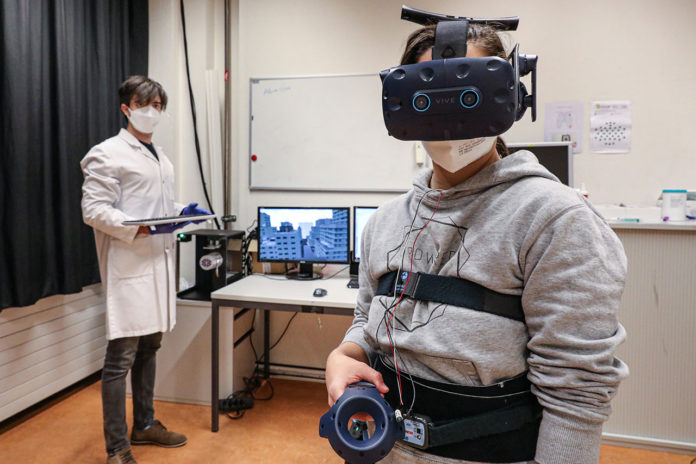Stress is your body’s way of responding to any demand or threat. Everyone responds to stress differently.
Any event that causes stress is called a “stressor.” Our bodies are equipped to handle acute exposure to stressors. Still, chronic exposure can result in mental disorders, e.g., anxiety and depression, and even physical changes, e.g., cardiovascular alterations seen in hypertension or stroke-disorders.
Using wearables and other sensing technologies has made some progress in the elderly and at-risk individuals; however, given how different our lifestyles are, it has been elusive objective markers of psychogenic disease.
Now, behavioral scientists led by Carmen Sandi at EPFL‘s School of Life Sciences have developed a virtual reality (VR) method that measures a person’s susceptibility to psychogenic stressors.
The test was built based on previous animal studies. It captures high-density locomotion information from a person while exploring two virtual environments to predict heart-rate variability when exposed to threatening or highly stressful situations.
The study involved 135 participants in three different VR scenarios. In the first scenario, they explored an empty virtual room, starting from a small red step, facing one of the walls.
The virtual room itself had the same dimensions as the real one that the participants were in so that if they touched a virtual wall, they would feel it. After 90 seconds of exploration, the participants were told to return to the small red step they’d started from. The VR room would fade to black, and then the second scenario would begin.
In the second scenario, the participants found themselves on an elevated virtual alley several meters above a virtual city’s ground. They were then asked to explore the alley for 90 seconds and then return to the red step. Once on it, the step began to descend faster and faster it reached the ground level. Another fade, and then came the final scene.
In the third scenario, the participants were “placed” in a completely dark room. Armed with nothing but a virtual flashlight, they were told to explore a darkened maze corridor, in which four human-like figures were placed in corner areas, while three sudden bursts of white noise came through the participant’s headphones every twenty seconds.
Scientists measured the participant’s heart rates when they went through each VR scenario. Later, they analyzed the locomotor data from the first two scenarios using machine-learning methods and developed a model that can predict a person’s stress response – changes in heart rate variability – in the third threatening scenario.
Scientists then tested the model and found that its predictions can work on different groups of participants. They also confirmed that the model could predict stress vulnerability to a different stressful challenge.
Carmen Sandi says: “The advantage of our study is that we have developed a model in which capturing behavioral parameters of how people explore two novel virtual environments is enough to predict how their heart rate variability would change if they were exposed to highly stressful situations; hence, eliminating the need of testing them in those highly stressful conditions.”
Journal Reference:
- Rodrigues, J., Studer, E., Streuber, S. et al. Locomotion in virtual environments predict cardiovascular responsiveness to subsequent stressful challenges. Nat Commun 11, 5904 (2020). DOI: 10.1038/s41467-020-19736-3
